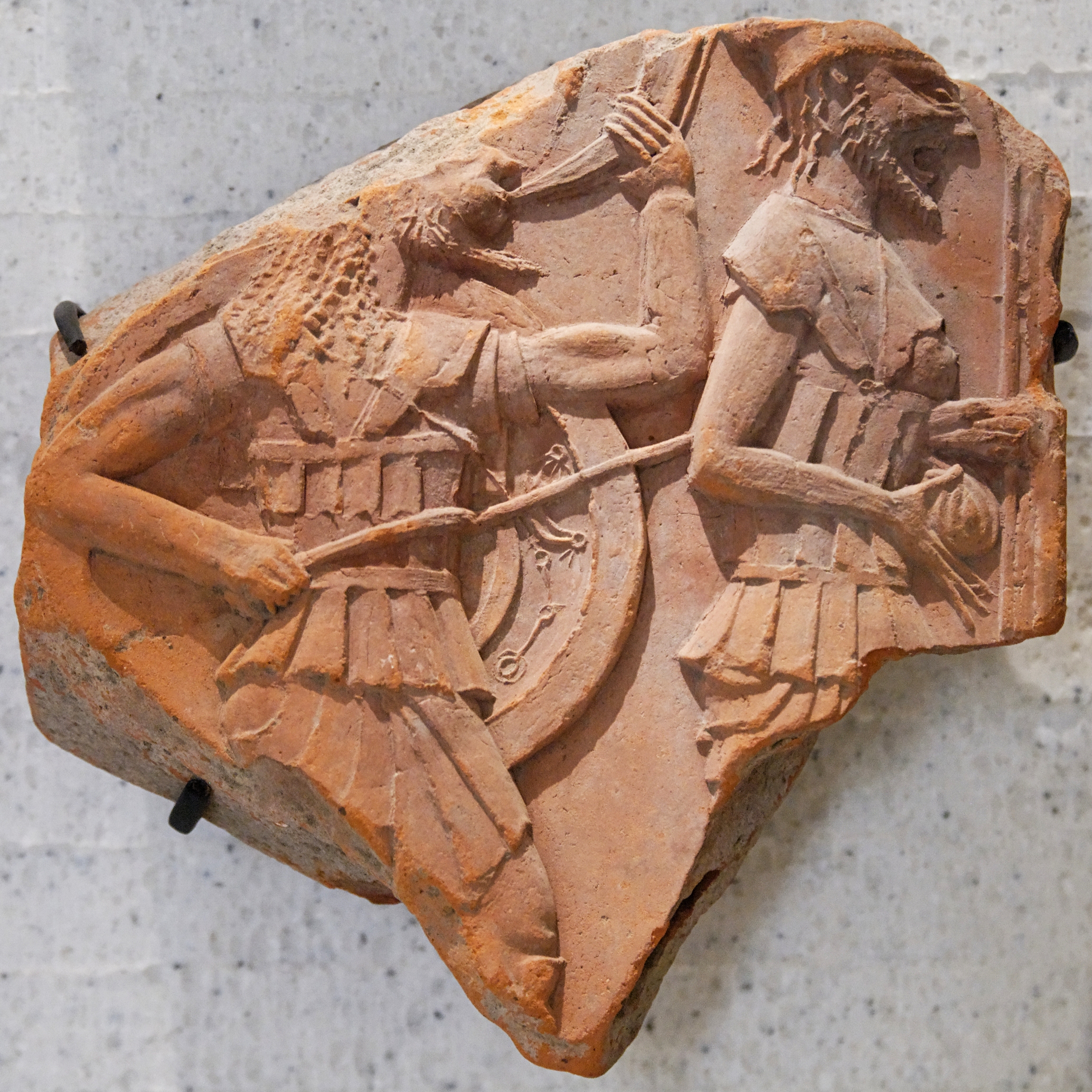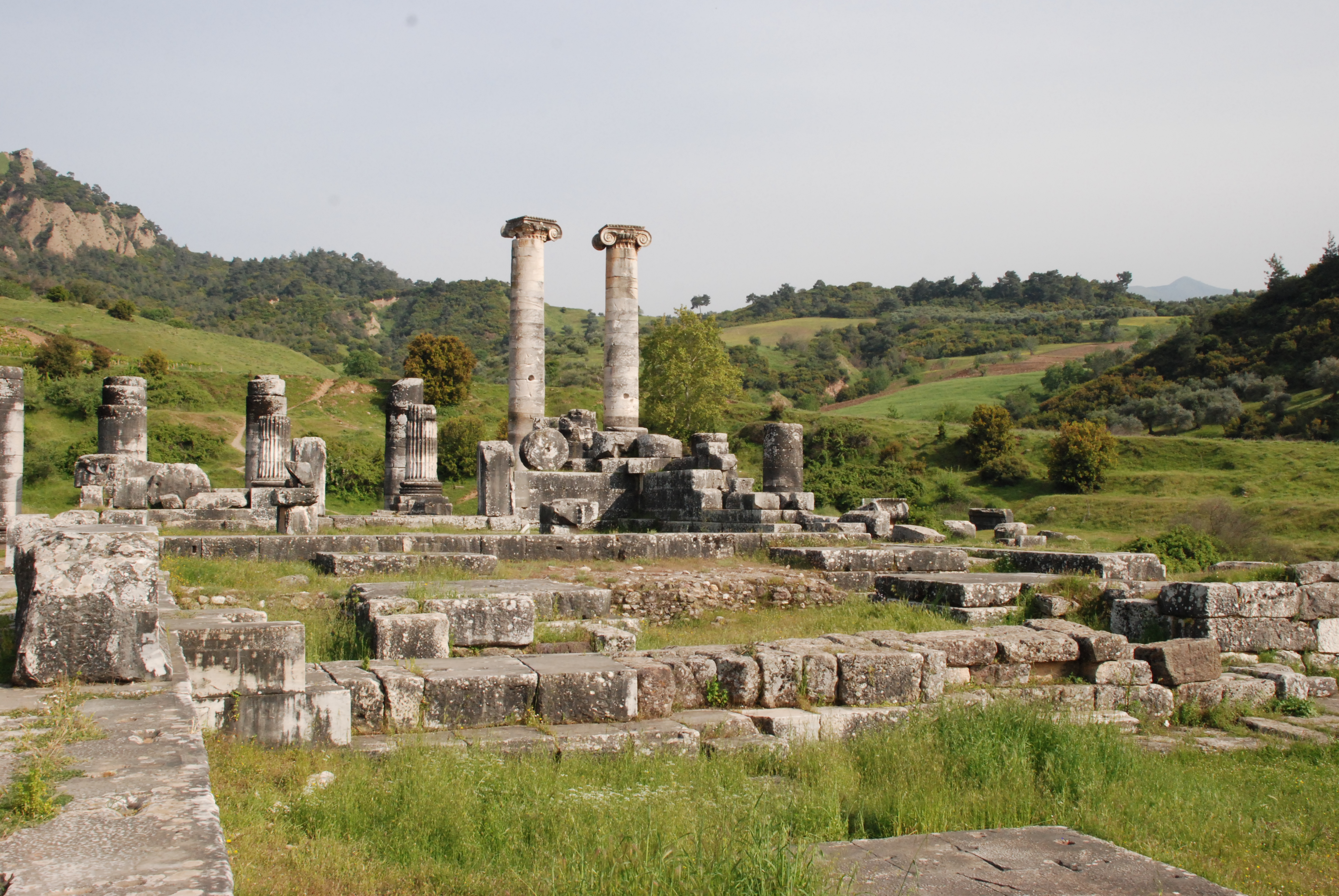|
Sandakšatru
Sandakshatru or Sandakuru ( or ) was the last known Cimmerian king. Name The name of this Cimmerian king is attested in a form which can be read as either or , which are derived from a name in a Cimmerian dialect of the Iranian languages#Old Iranian, Old Iranian Scythian languages, Scythian language. The linguist János Harmatta reconstructed this original Cimmerian name as , meaning "splendid son," while the Scythologist Askold Ivantchik derives the name from a compound term consisting of the name of the Anatolian deity Sandas, , and of the Iranian term , usually translated as "power", "authority", "rule", "control" or similar terms (and cognate with the Indo-Aryan caste name ''kshatriya''). Historical background In the 8th and 7th centuries BC, a significant movement of the nomads of the Eurasian steppe brought the Scythians into Southwest Asia. According to Herodotus, this movement started when the Massagetae or the Issedones migrated westwards, forcing the Scythians to th ... [...More Info...] [...Related Items...] OR: [Wikipedia] [Google] [Baidu] |
Cimmerians
The Cimmerians were an Ancient Iranian peoples, ancient Eastern Iranian languages, Eastern Iranian peoples, Iranic Eurasian nomads, equestrian nomadic people originating in the Pontic–Caspian steppe, part of whom subsequently migrated into West Asia. Although the Cimmerians were Scythian cultures, culturally Scythian, they formed an ethnic unit separate from the Scythians proper, to whom the Cimmerians were related and who displaced and replaced the Cimmerians.: "As the Cimmerians cannot be differentiated archeologically from the Scythians, it is possible to speculate about their Iranian origins. In the Neo-Babylonian texts (according to D’yakonov, including at least some of the Assyrian texts in Babylonian dialect) and similar forms designate the Scythians and Central Asian Saka, reflecting the perception among inhabitants of Mesopotamia that Cimmerians and Scythians represented a single cultural and economic group" The Cimmerians themselves left no written records, and m ... [...More Info...] [...Related Items...] OR: [Wikipedia] [Google] [Baidu] |
Treri
The Treres (; ) were a Thracian tribe, of whom a part invaded Anatolia in the 7th century BCE, while another part lived in Thrace and Illyria. History In Anatolia Around the , the Treres migrated across the Thracian Bosporus and invaded Anatolia from the north-west, after which they allied with the Cimmerians, who were a nomadic Iranic people originating in the Eurasian Steppe who had themselves invaded Anatolia from the east in the middle of the preceding 8th century BCE. From around the , the Treres were nomadising in Anatolia along with the Cimmerians. Invasion of Lydia In 644 BCE, the Treres under their king Kōbos (), along with the Cimmerians under their king Lygdamis, and in alliance with the Lycians or Lycaonians, attacked the kingdom of Lydia: they defeated the Lydians and captured their capital city of Sardis except for its citadel, and the Lydian king Gyges was killed during this attack. Invasion of Asian Greece After sacking Sardis, Lydgamis and Kōbos led the Ci ... [...More Info...] [...Related Items...] OR: [Wikipedia] [Google] [Baidu] |
Volga
The Volga (, ) is the longest river in Europe and the longest endorheic basin river in the world. Situated in Russia, it flows through Central Russia to Southern Russia and into the Caspian Sea. The Volga has a length of , and a catchment area of .«Река Волга» , Russian State Water Registry It is also Europe's largest river in terms of average discharge at delta – between and – and of . It is widely regarded as the national river of |
Bosporus
The Bosporus or Bosphorus Strait ( ; , colloquially ) is a natural strait and an internationally significant waterway located in Istanbul, Turkey. The Bosporus connects the Black Sea to the Sea of Marmara and forms one of the continental boundary between Asia and Europe, boundaries between Asia and Europe. It also divides Turkey by separating Anatolia, Asia Minor from East Thrace, Thrace. It is the world's narrowest strait used for international waterway, international navigation. Most of the shores of the Bosporus Strait, except for the area to the north, are heavily settled, with the city of Istanbul's metropolitan area, metropolitan population of 17 million inhabitants extending inland from both banks. The Bosporus Strait and the Dardanelles Strait at the opposite end of the Sea of Marmara are together known as the Turkish Straits. Sections of the shore of the Bosporus in Istanbul have been reinforced with concrete or rubble and those sections of the strait prone t ... [...More Info...] [...Related Items...] OR: [Wikipedia] [Google] [Baidu] |
Thracians
The Thracians (; ; ) were an Indo-European languages, Indo-European speaking people who inhabited large parts of Southeast Europe in ancient history.. "The Thracians were an Indo-European people who occupied the area that today is shared between Thrace, north-eastern Greece, Romania, and north-western Turkey. They shared the same language and culture. There may have been as many as a million Thracians, divided among up to 40 tribes." Thracians resided mainly in Southeast Europe in Present (time), modern-day Bulgaria, Romania, North Macedonia, northern Greece and European Turkey, but also in north-western Anatolia, Anatolia (Asia Minor) in Turkey. The exact origin of the Thracians is uncertain, but it is believed that Thracians like other Indo-European speaking groups in Europe descended from a mixture of Proto-Indo-Europeans and Early European Farmers. Around the 5th millennium BC, the inhabitants of the eastern region of the Balkans became organized in different groups of Indi ... [...More Info...] [...Related Items...] OR: [Wikipedia] [Google] [Baidu] |
Sozopol Archaeological Museum IMG 4219
Sozopol ( ; ) is an ancient seaside town located 35 km south of Burgas on the southern Bulgarian Black Sea Coast. One of the major seaside resorts in the country, it is known for the ''Apollonia'' art and film festival (which takes place in early September) that is named after one of the town's ancient names. Part of Burgas Province and administrative centre of the homonymous Sozopol Municipality, as of December 2009, the town has a population of 5,410 inhabitants. In antiquity, the place was the site of a prosperous Greek colony named ''Antheia'' and later known as ''Apollonia.'' In 72 BC it was devastated by a Roman siege, and became a small town of lesser importance. By the first century AD, the name ''Sozopolis'' began to appear in written records. The busiest times of the year are the summer months, ranging from May to September, as tourists from around the world come to enjoy the weather, sandy beaches, history and culture, fusion cuisine (Balkan and Mediterranean), and atmo ... [...More Info...] [...Related Items...] OR: [Wikipedia] [Google] [Baidu] |
Neo-Assyrian Empire
The Neo-Assyrian Empire was the fourth and penultimate stage of ancient Assyrian history. Beginning with the accession of Adad-nirari II in 911 BC, the Neo-Assyrian Empire grew to dominate the ancient Near East and parts of South Caucasus, North Africa and East Mediterranean throughout much of the 9th to 7th centuries BC, becoming the List of largest empires, largest empire in history up to that point. Because of its geopolitical dominance and ideology based in world domination, the Neo-Assyrian Empire has been described as the first world empire in history. It influenced other empires of the ancient world culturally, administratively, and militarily, including the Neo-Babylonian Empire, Neo-Babylonians, the Achaemenid dynasty, Achaemenids, and the Seleucid Empire, Seleucids. At its height, the empire was the strongest military power in the world and ruled over all of Mesopotamia, the Levant and Egypt, as well as parts of Anatolia, Arabian Peninsula, Arabia and modern-day Ir ... [...More Info...] [...Related Items...] OR: [Wikipedia] [Google] [Baidu] |
Gyges Of Lydia
Gyges (reigned c. 680–644 BC) was the founder of the Mermnad dynasty of Lydian kings and the first known king of the Lydian kingdom to have attempted to transform it into a powerful empire. Gyges reigned 38 years according to Herodotus. Attestations and etymology The name is derived from the Ancient Greek form () recorded by Graeco-Roman authors. In addition, the annals of the Assyrian king Ashurbanipal refer several times to , king of , to be identified with Gyges, king of the Lydians. and are respectively the Akkadian and Greek forms of the Lydian name (), which means "grandfather". is derived from a common Proto-Indo-European root from which evolved Hittite (), Luwian () and (), and Lycian () in the Anatolian languages family, as well as Latin , all meaning "grandfather". Another derivation for suggests that it might be a loanword from Carian (), which was represented in Greek as (), and was a cognate of the various Anatolian words for "grandfather": ... [...More Info...] [...Related Items...] OR: [Wikipedia] [Google] [Baidu] |
Lydia
Lydia (; ) was an Iron Age Monarchy, kingdom situated in western Anatolia, in modern-day Turkey. Later, it became an important province of the Achaemenid Empire and then the Roman Empire. Its capital was Sardis. At some point before 800 BC, the Lydian people achieved some sort of political cohesion, and existed as an independent kingdom by the 600s BC. At its greatest extent, during the 7th century BC, it covered all of western Anatolia. In 546 BC, it became a Lydia (satrapy), satrapy of the Achaemenid Empire, known as ''Sparda'' in Old Persian. In 133 BC, it became part of the Roman Republic, Roman Asia (Roman province), province of Asia. Lydian coins, made of electrum, are among the oldest in existence, dated to around the 7th century BC. Geography Lydia is generally located east of ancient Ionia in the modern western Turkish provinces of Uşak Province, Uşak, Manisa Province, Manisa and inland İzmir Province, İzmir.Rhodes, P.J. ''A History of the Classical Greek ... [...More Info...] [...Related Items...] OR: [Wikipedia] [Google] [Baidu] |
Phrygia
In classical antiquity, Phrygia ( ; , ''Phrygía'') was a kingdom in the west-central part of Anatolia, in what is now Asian Turkey, centered on the Sangarios River. Stories of the heroic age of Greek mythology tell of several legendary Phrygian kings: * Gordias, whose Gordian Knot would later be cut by Alexander the Great * Midas, who turned whatever he touched to gold * Mygdon, who warred with the Amazons According to Homer's ''Iliad'', the Phrygians participated in the Trojan War as close allies of the Trojans, fighting against the Achaeans. Phrygian power reached its peak in the late 8th century BC under another historical king, Midas, who dominated most of western and central Anatolia and rivaled Assyria and Urartu for power in eastern Anatolia. This later Midas was, however, also the last independent king of Phrygia before Cimmerians sacked the Phrygian capital, Gordium, around 695 BC. Phrygia then became subject to Lydia, and then successivel ... [...More Info...] [...Related Items...] OR: [Wikipedia] [Google] [Baidu] |





